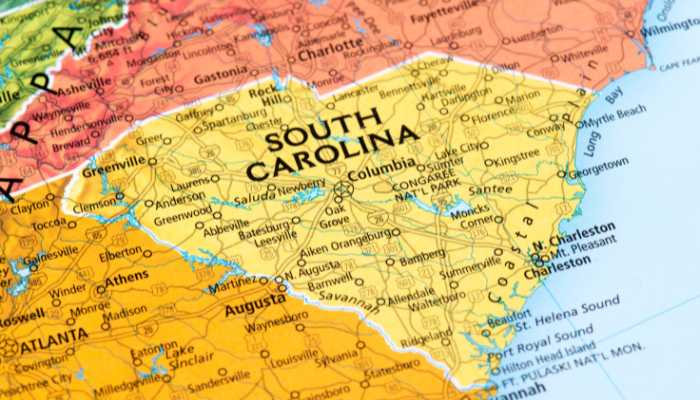South Carolina is a state located in the southeastern United States.
The state is bordered by North Carolina to the north, Georgia to the south, and the Atlantic Ocean to the east.
South Carolina’s economy is based on agriculture.
The state is a leading producer of tobacco, cotton, and soybeans. Other important agricultural products include poultry, livestock, dairy products, and fish.
The climate of South Carolina is generally warm and humid. The state experiences a large amount of precipitation, which is necessary for agriculture.
Plant Hardiness Zone Map
Let us have a look at the Zone Map of the state.
Plant Hardiness Zone Map for South Carolina

Climate
The state of South Carolina experiences a hot and humid subtropical climate with hot summers and mild winters.
The annual average temperature differs throughout the state from the mid-50s (°F) in the mountains to the mid-60s (°F) along the coast.
Precipitation
Average annual precipitation is around 80 inches near Lake Jocassee in the mountains of the far northwest to less than 39 inches at Wateree in the Midlands, the driest part of the state.
While the average rainfall in the rest of the state is mostly 45 to 50 inches in the Midlands and 45 to 55 inches in the coastal Lowcountry.
Soil type
The below map shows the distribution of soil order across the state of South Carolina.

Soil Order Of South Carolina
| Soil / Sub Order | Location | Characteristics |
|---|---|---|
| Ultisols/Udults and Aquults | Aquults are found in the coastal plain while Udults are found throughout the state | 1. Aquults are the Ultisols in wet areas where groundwater is very close to the surface 2. Udults are more or less freely drained relatively humus poor Ultisols 3. Have a udic moisture regime |
| Inceptisols/Aquepts | In small areas of the coastal plain, piedmont, and the blue ridge region | 1. These are wet Inceptisols 2. Their natural drainage is poor or very poor therefore these soils need to be artificially drained. |
| Entisols/Aquents and Psammants | In the sandhills and the coastal zone | 1. Psammants, found in the sandhills, are sandy in all layers. 2. While Aquepts are wet Entisols that are found on the coastal zone of the state |
| Alfisols/Aqualfs and Udalfs | In the sandy hills and the coastal region | 1. Aqualfs, which have warm and aquic conditions, primarily are found in the coastal region of the state 2. Udalfs have a udic moisture regime that occurs in the sandhills region. |
| Mollisols/Aquolls | The small amount found in the coastal region | 1. These are wet mollisols |
| Histosols/Saprists | In the coastal zone of the state | 1. These are wet histosols in which the organic matter is well decomposed. |
| Spodosols/Aquods | Found in the coastal zone in a very limited amount | 1. These are wet Spodosols characterized by a fluctuating water table. |


